Spark Award Winner
2024 - Separation of rare earth elements using thiometallates
Victor Mougel, Marie Amélie Perrin

Procedure for recycling rare earths: These elements are an indispensable part of modern electronics. These elements have until now barely been recycled because they can only be separated with an enormous outlay of energy and chemicals. The problem lies in the chemical similarity of the elements. ETH doctoral student Marie Perrin and her supervisor Victor Mougel have developed a method that enables the elements to be separated efficiently. ETH news
2023 - Recyclable anticorrosion coating for metals with self-healing properties
Marco F. D’Elia, Walter Caseri, Markus Niederberger, Mirko Magni, Stefano Trasatti

Strong corrosion protection: Corrosion attacks everything, from ships to skyscrapers. The market for effective corrosion protection is correspondingly large. Researchers led by Markus Niederberger and Walter Caseri have developed a plastic that greatly improves protection. Sprayed on like paint, this polymer can even be peeled off again, recycled and reused. ETH news
2022 - Method for site-selective protein functionalization
Daniel Richter, Dr. Edgars Lakis, Professor Jörn Piel
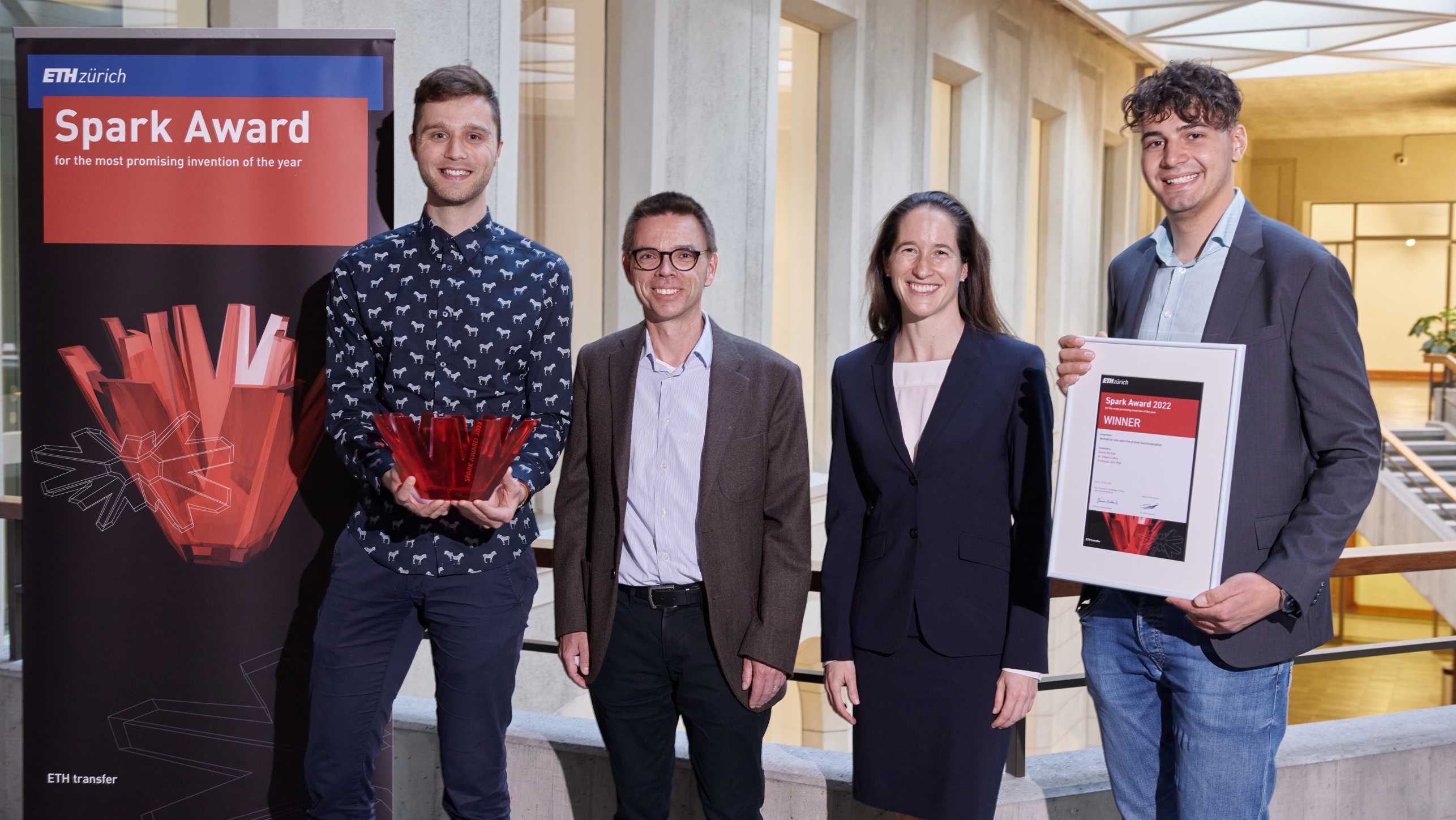
A versatile method: The biochemical method developed by Lakis, Piel and Richter offers significant potential in the fields of medicine and research. Their method can be used to link a selected protein to any payload they choose – for example a drug molecule or a biomarker. The reaction that creates this linkage is highly selective, allowing cell functions to be modified with a high degree of precision. ETH news
2021 - Multi-component fibrous moulding materials with deaeration features and manufacture thereof
Professor Paolo Ermanni, Dr. Christoph Schneeberger, Nicole Aegerter, Professor Joanna Wong, Dr Shelly Arreguin
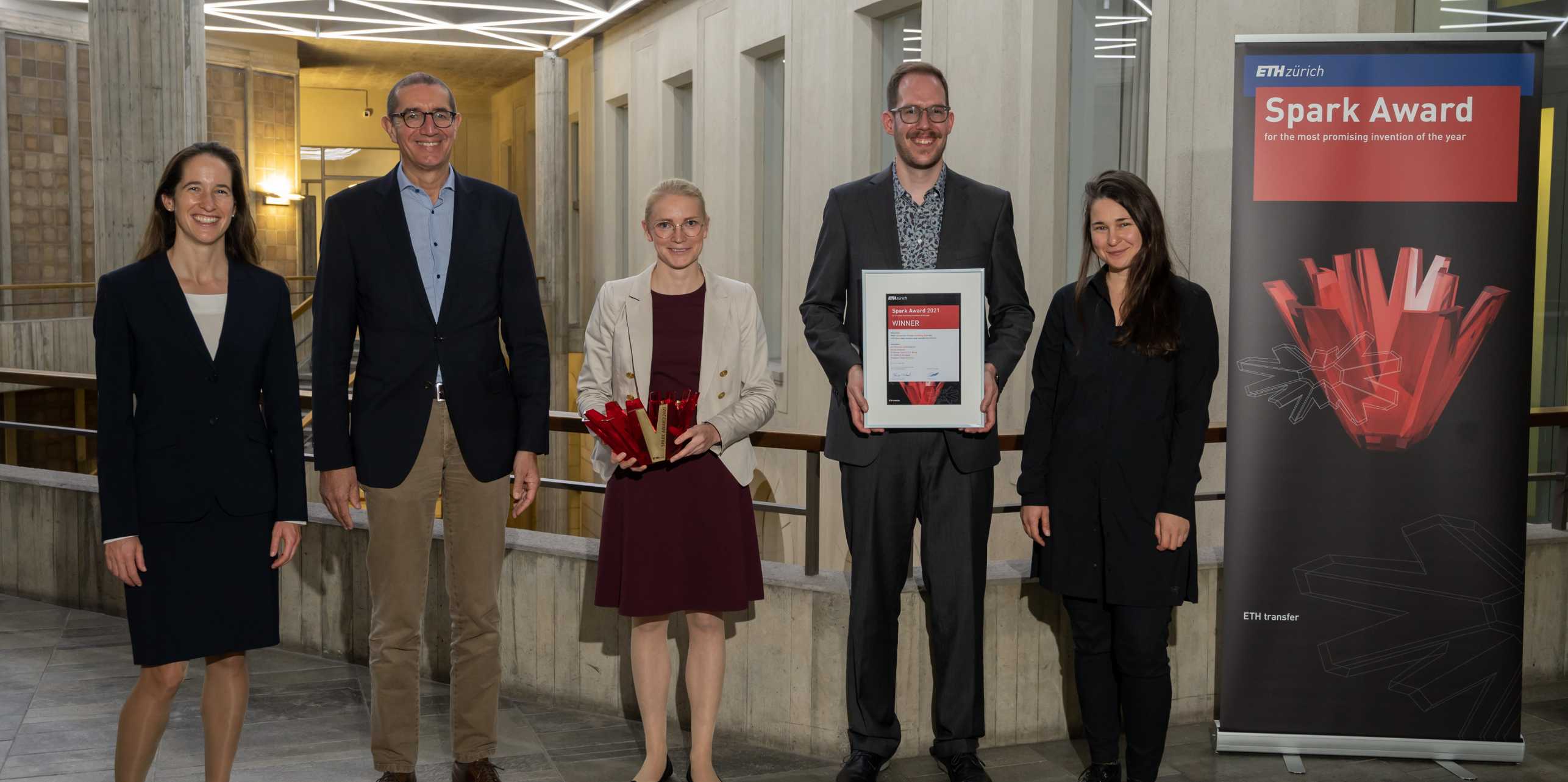
Making lightweight construction sustainable: Composite materials are everywhere, from medical implants to planes. However, most composites are difficult, if not impossible, to recycle. Researchers led by Ermanni have now developed an innovative process for production of fibre-reinforced composites. The materials are recyclable and can be used cost-effectively for the first time with the new process. Thanks to their high load-bearing properties, they are particularly suitable for large-scale components, such as wind turbine rotor blades. ETH news
2020 - Chemical tools for fibrosis and tumour imaging
Professor Helma Wennemers, Dr. Matthew R. Aronoff
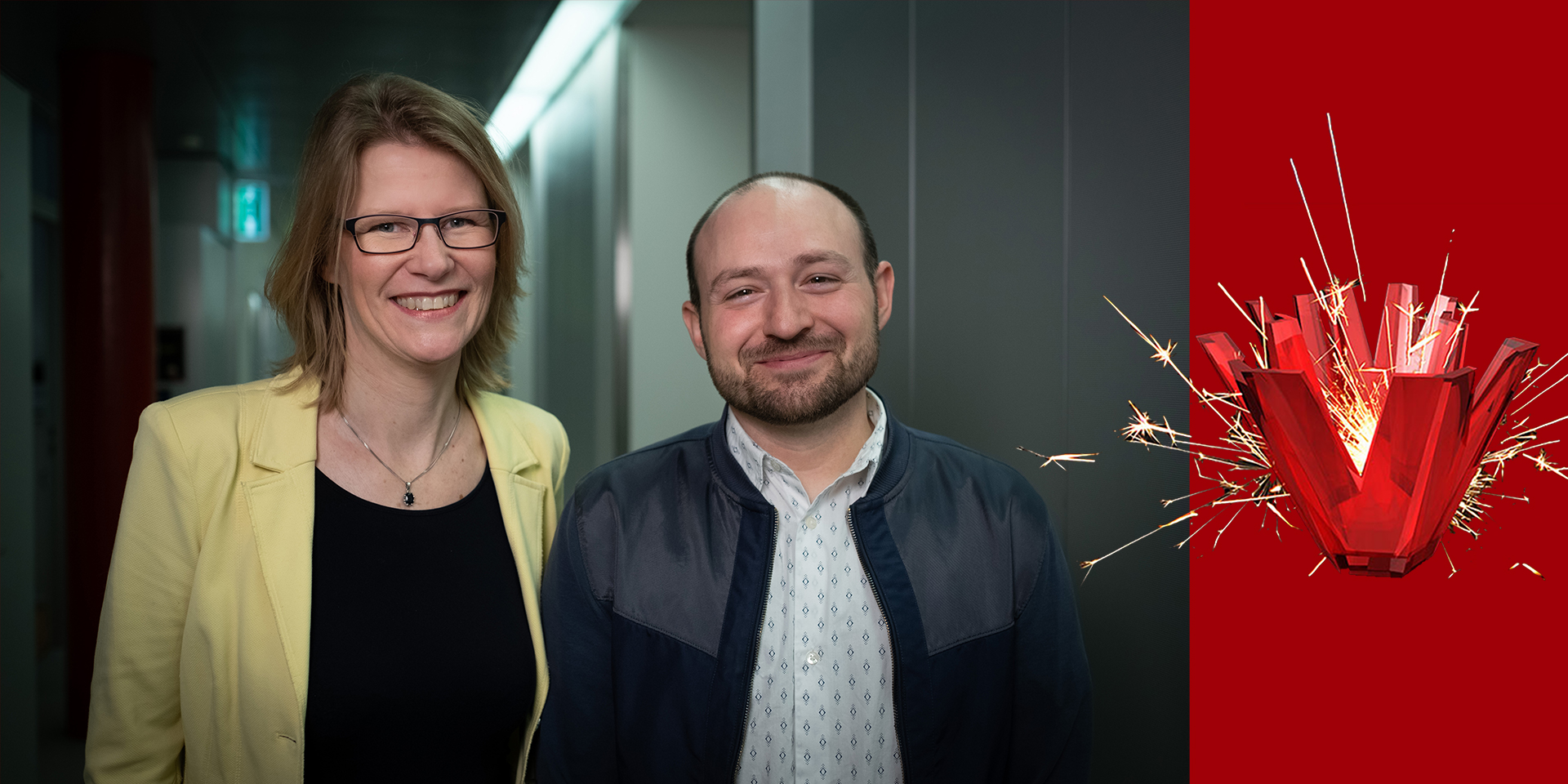
Illuminated tumour tissue: The winning technology: In fibrotic diseases or cancerous tumours, an uncontrolled amount of tissue often forms. This process involves the enzyme LOX, which initiates the cross-linking of collagen proteins into tissue. Matthew Aronoff and Helma Wennemers are using LOX to make tumour tissue visible. They have developed a fluorescent marker that accumulates where LOX is active, which should allow surgeons to distinguish the tumour from healthy tissue during operations. ETH news
2019 - Removal of fluoride from water using amyloid fibrils and transition metal nanoparticles
Sreenath Bolisetty, Qingrui Zhang, Raffaele Mezzenga
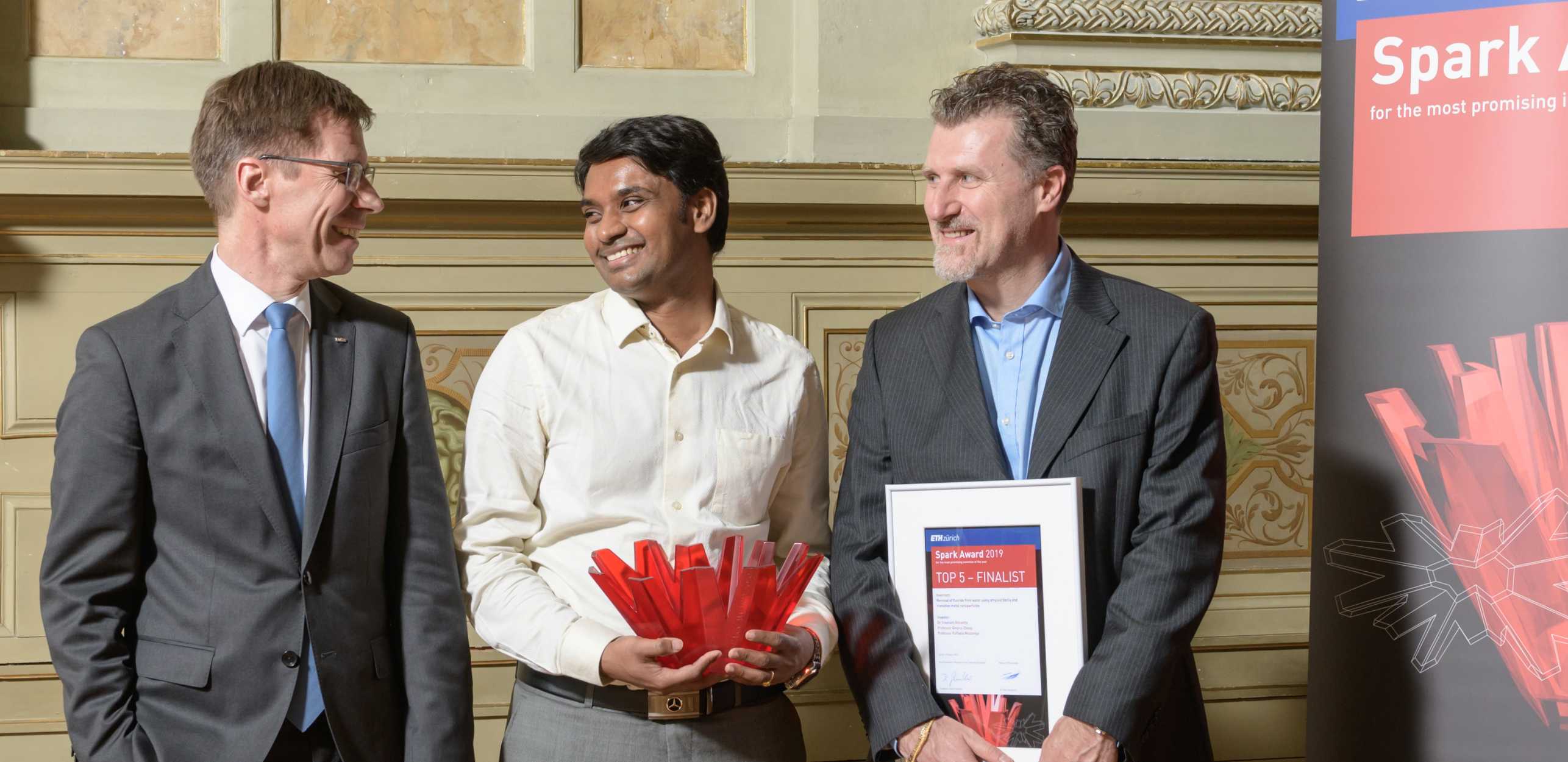
Filtering fluoride out of drinking water: Excessive amounts of fluoride are harmful to health. In some cases, fluoride contamination is man-made, but the substance also occurs naturally. Concentrations are particularly high in regions with volvanic activity. Raffaele Mezzenga, Sreenath Bolisetty and Quingrui Zhang have developed a charcoal filter from whey protein and atoxic zirconium oxide nanoparticles that remove fluoride from drinking water efficiently and economically. ETH news
2018 - Treatment of intestinal diseases with consortia of living bacteria
Laura Berchtold, Christophe Chassard, Tomas de Wouters, Fabienne Kurt, Christophe Lacroix, Marco Meola, Markus Reichlin, Gerhard Rogler, Florian Rosenthal, Michael Scharl, Marianne Spalinger
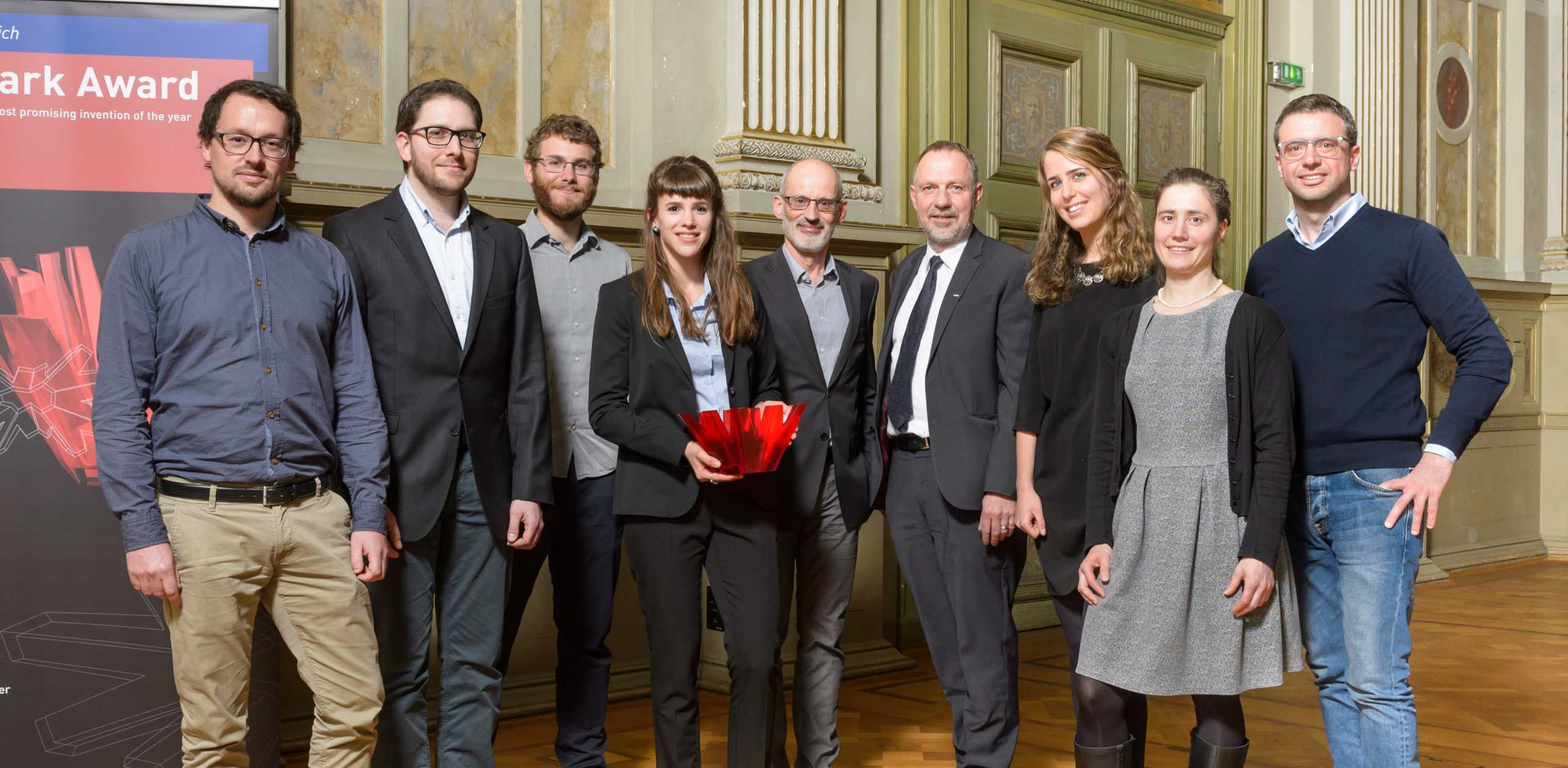
Bacterial mix for a healthy intestine: When the intestinal flora is out of balance, it can trigger diseases such as asthma and diabetes. The invention describes a sophisticated minimal mix of bacteria that re-stabilises the intestine's ecosystem. The research project was launched in the group of Professor Lacroix (D-HEST). The collaboration with the University Hospital Zurich brought the necessary complementary expertise to the research team. In 2016 the ETH spin-off Pharmabiome was founded with co-inventor and CEO Tomas de Wouters. ETH news
2017 - A novel antiviral defense strategy
Luigi Maddaluno, Michael Meyer, Sabine Werner
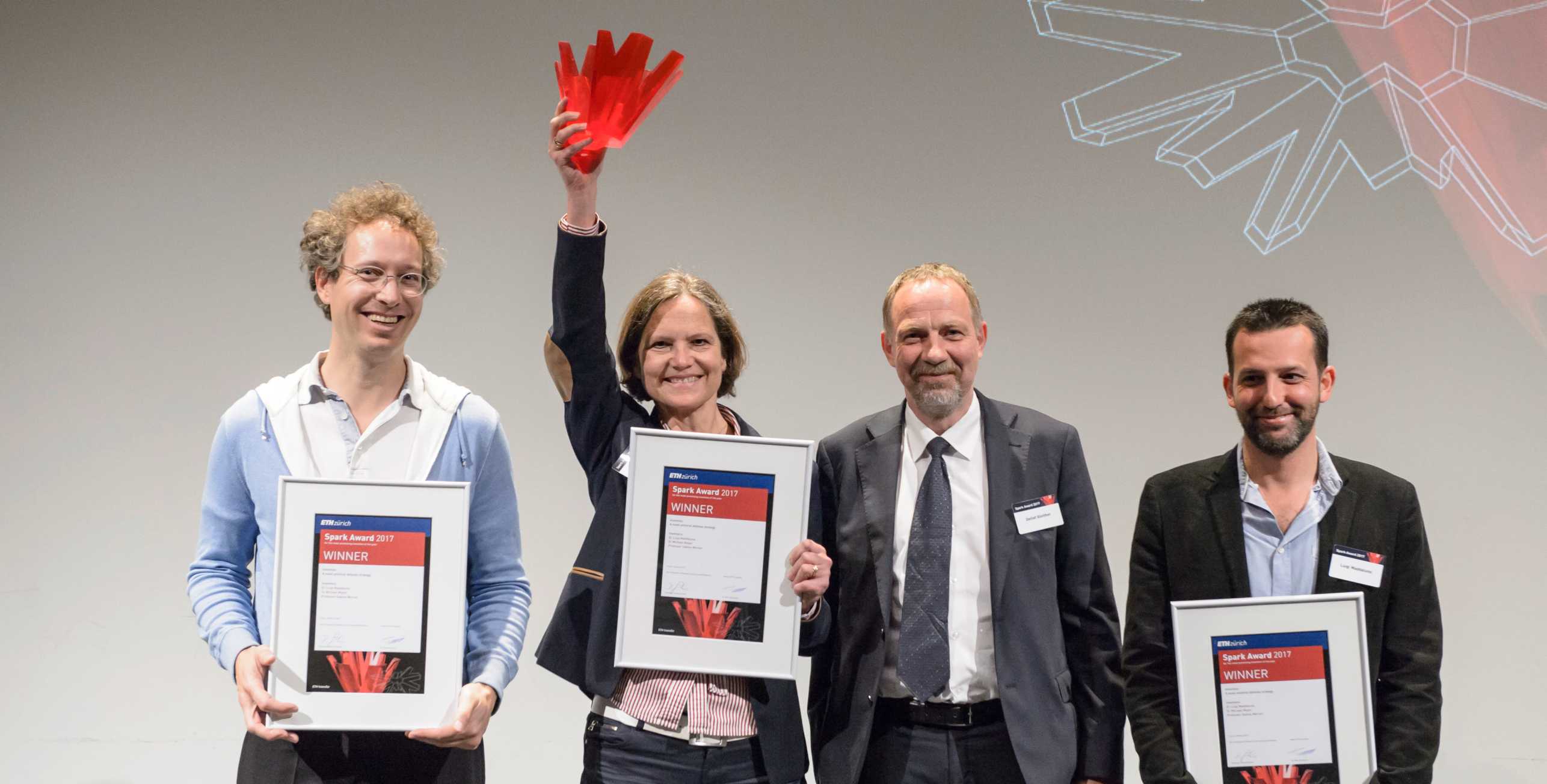
Innovative treatment method to combat viruses: To date, many drugs have only been effective against individual groups of viruses, and often the efficiency is limited. Sabine Werner, Luigi Maddaluno and Michael Meyer have identified a biological mechanism that makes it possible to treat many different virus infections. Rather than attacking the virus directly, the mechanism mobilises the body’s immune system. This new approach presumably has fewer side effects and could also be used in the treatment of epidemics. ETH news
2016 - Hand-held ultrasound imaging of speed-of-sound for breast examination
Orçun Göksel, Sergio José Sanabria Martin
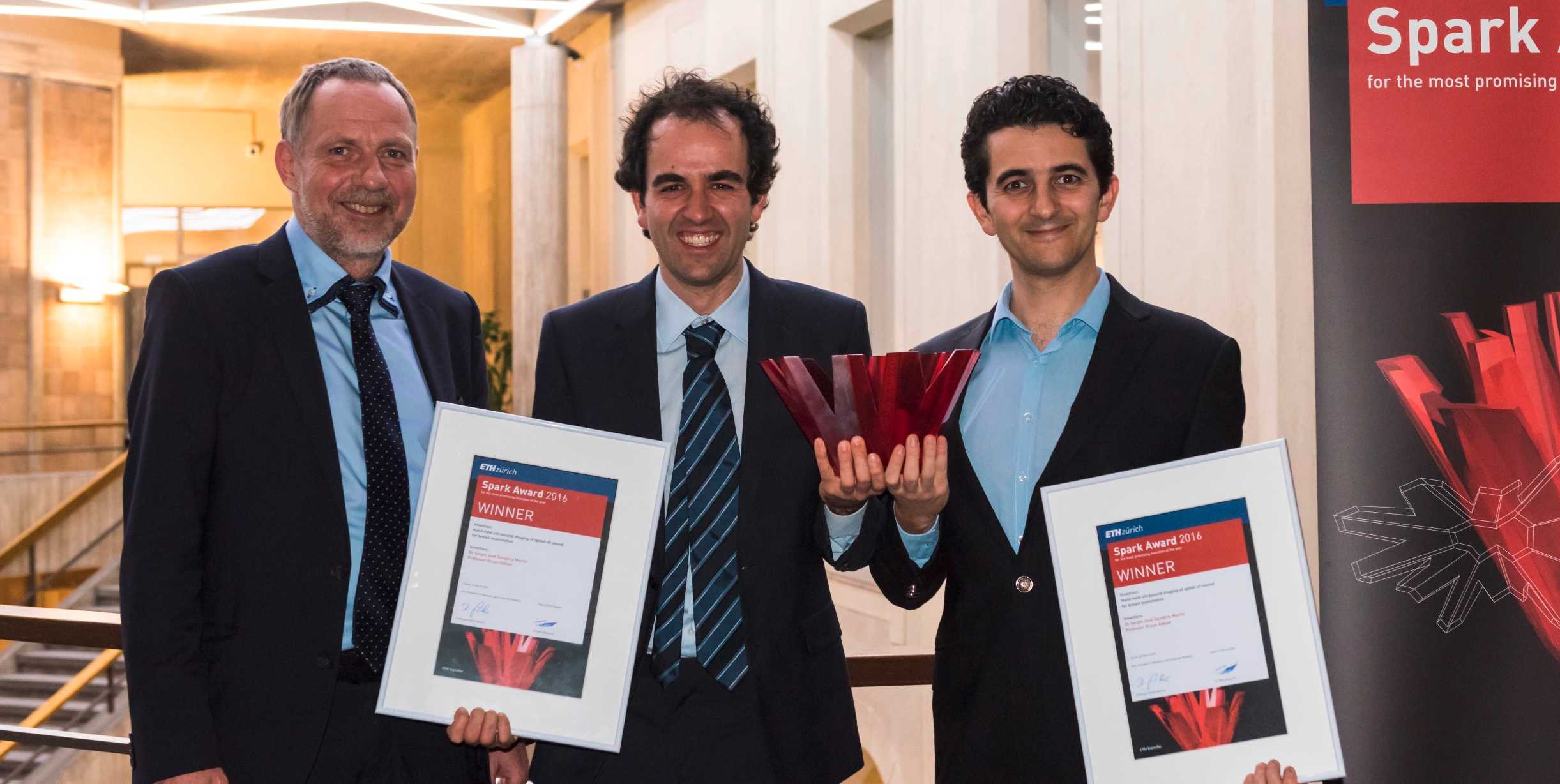
Detecting tumors with ultrasound: The novel ultrasonic measurement can be used to diagnose various tissue changes, in particular to detect tumours. Until now, many tumours could not be seen in an ultrasound. Instead of the standard practice of measuring the backscattering of sound, the new method measures the time taken by an ultrasound wave: the stiffer the tissue, which is the case with tumours, the faster the sound wave passes through the tissue. To do this, the researchers developed their own probe head together with an image processing programme. Patient trials are currently being carried out in collaboration with University Hospital Zurich. ETH news
2015 - A highly efficient screening platform to identify T cell specificities for the development of sensitive diagnostics or therapeutics
Jan Kisielow, Manfred Kopf, Franz-Josef Obermair
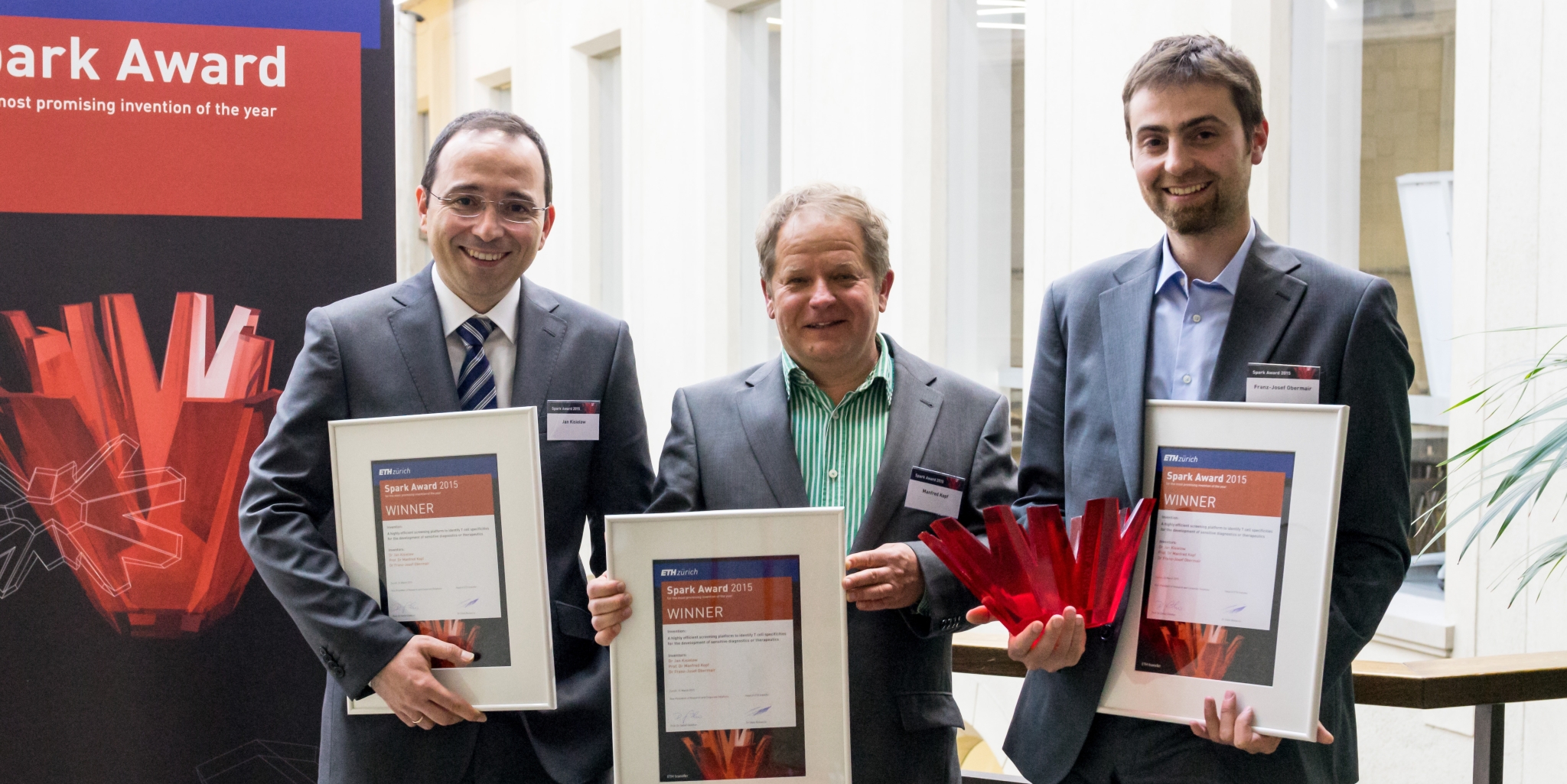
Target search in high-throughput: T-cells control our immune sytsem. In autoimmune diseases, such as polyarthritis or multiple sclerosis, T-cells incorrectly identify and attack healthy cells in the body. Kopf, Kisielow and Obermair developed a high-throughput method which identifies antigens that attach themselves to the misguided T-cells. This invention enables the development of customised therapies for patients with an autoimmune disease. ETH news
2014
Highly increased performance of memristive devices
Sebastian Schweiger, Felix Messerschmitt, Jennifer Rupp
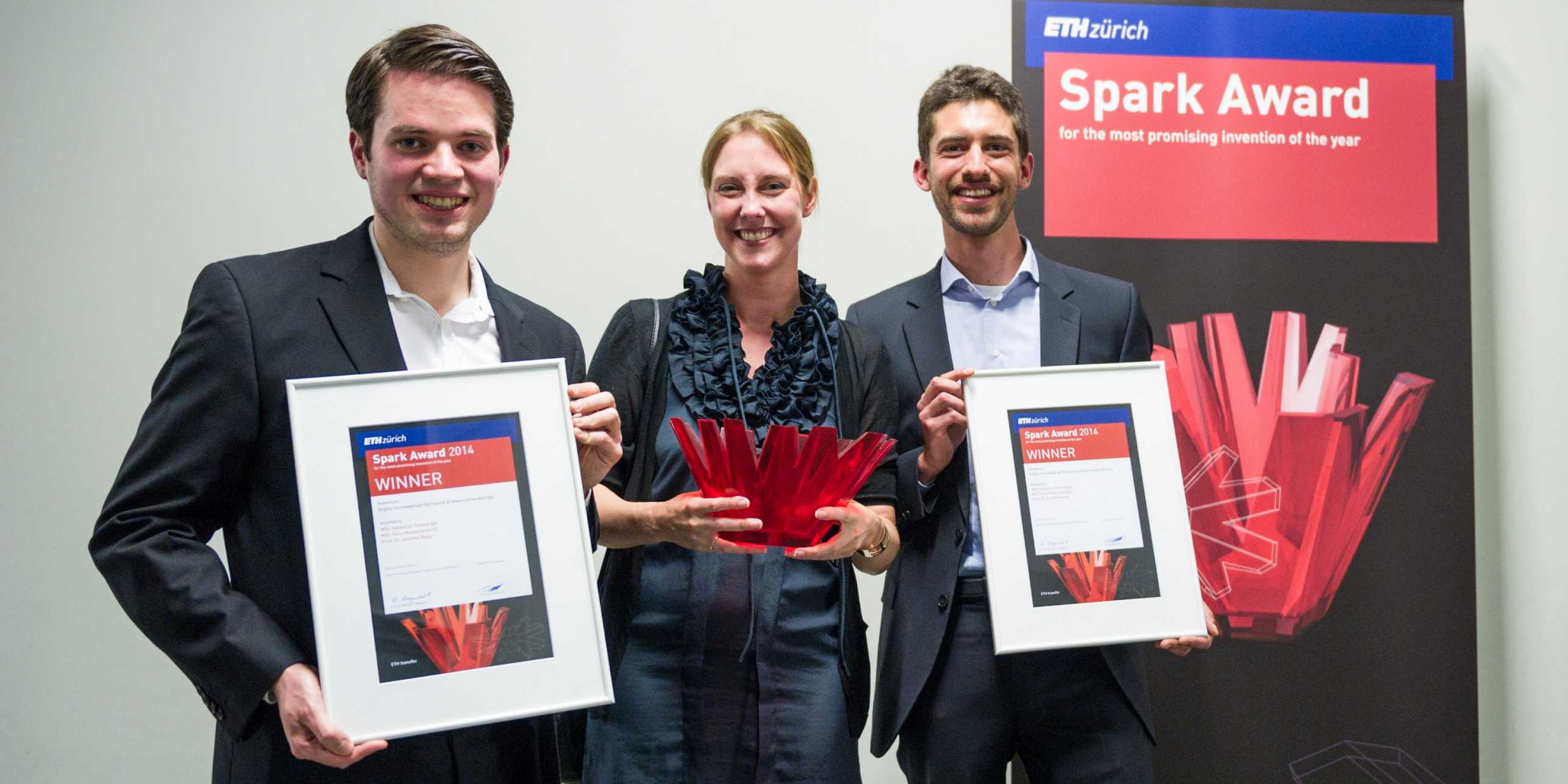
New data and computer storage for transistor use: Jennifer Rupp, Professor for Electromechanical Materials, Sebastian Schweiger and Felix Messerschmitt developed a concept for a very powerful and efficient memory module that may lead to a new generation of data storage devices, such as flash memory in USB sticks or central memories in computers. In specific terms, the technology concerns a ‘memristive’ storage device, where the term memristive is a combination of the words ‘memory’ and ‘resistor’. The chip is based on the recent ReRAM (Resistive Random Access Memory) technology, which saves data through the storage medium’s electrical resistance. ETH news
2013
Composites with extreme mechanical gradients
Rafael Libanori, Randall M. Erb, André R. Studart
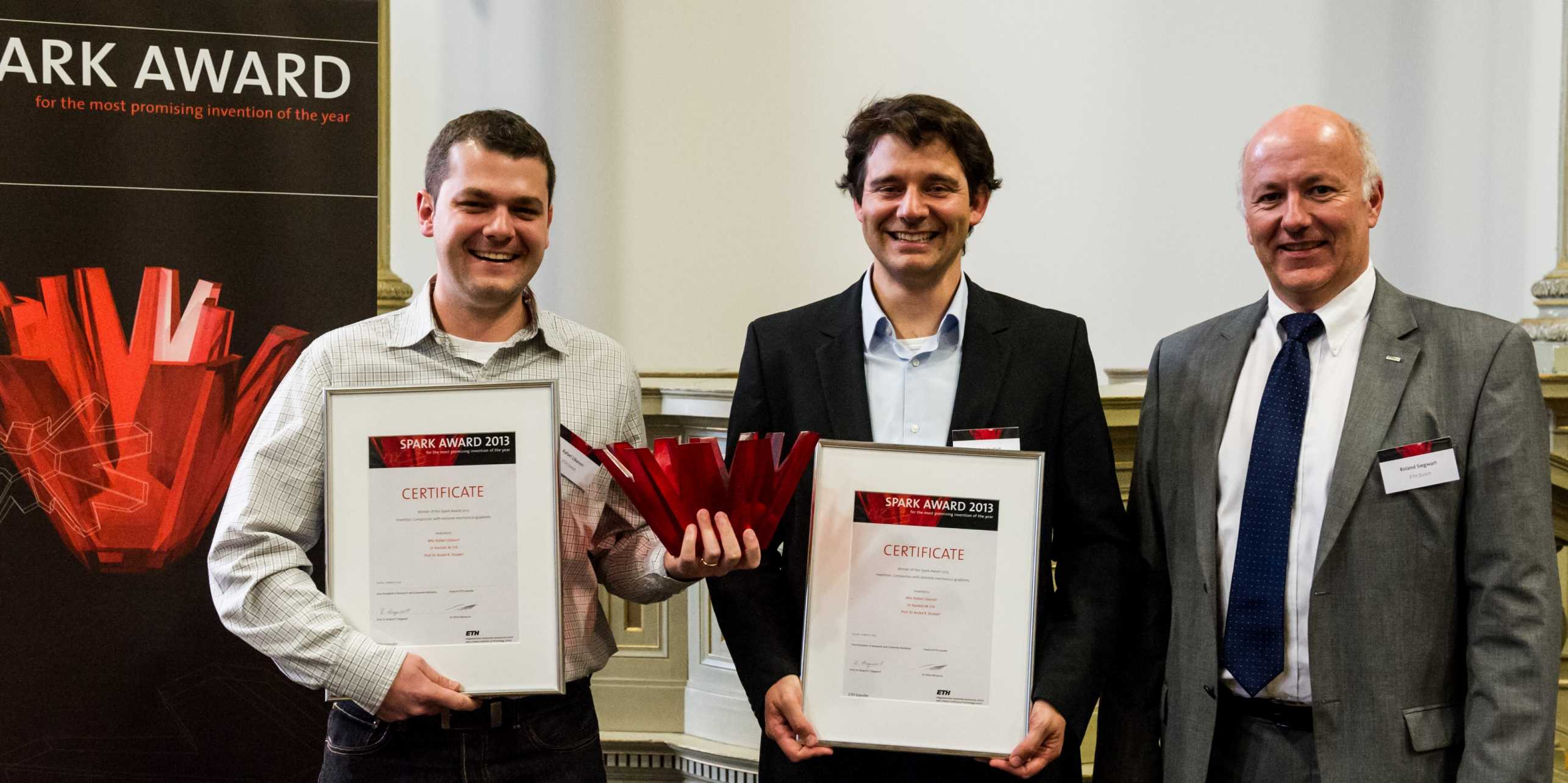
2012
Treatment of type 2 diabetes
Bettina Meissburger, Christian Wolfrum, Erick Carreira
